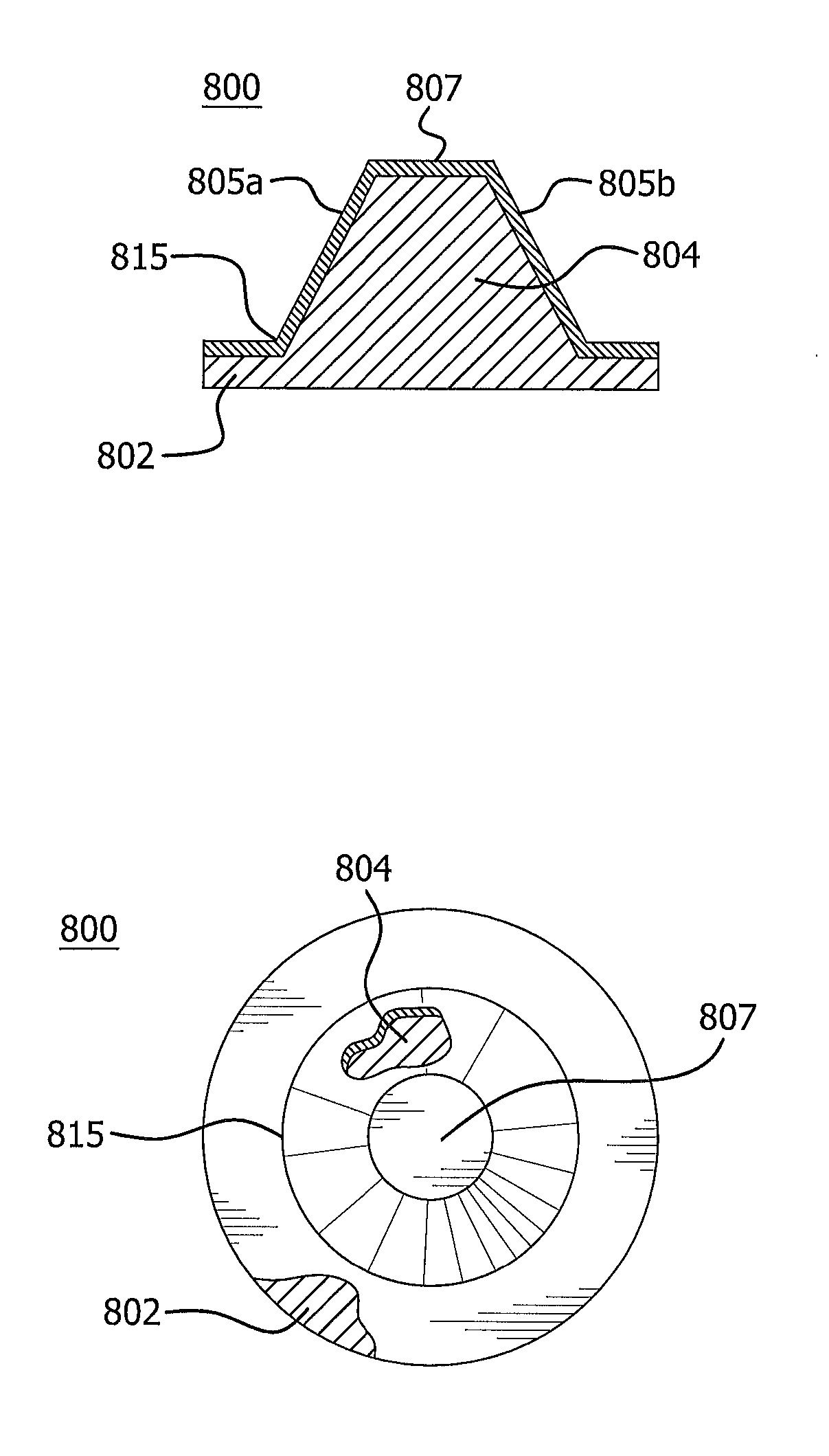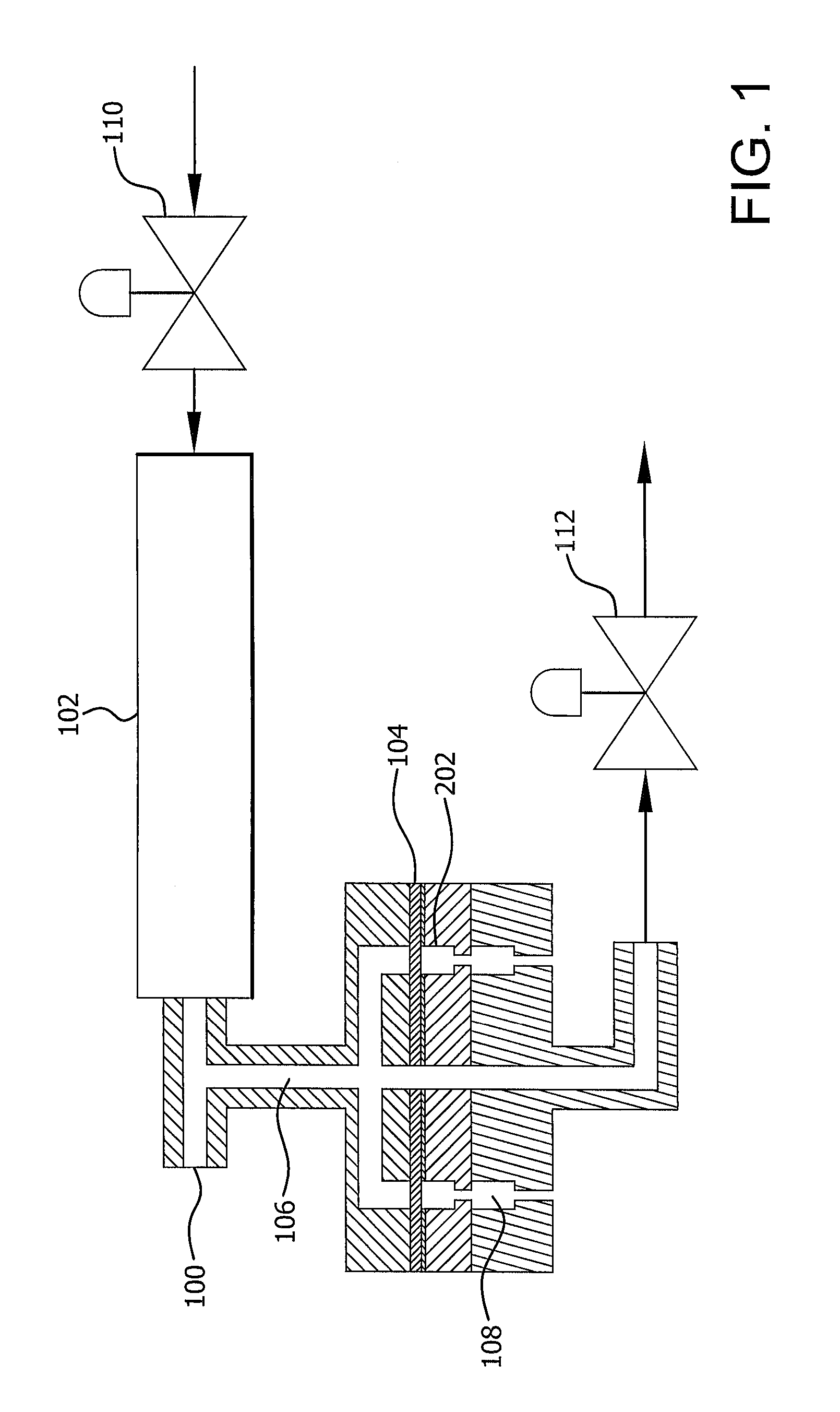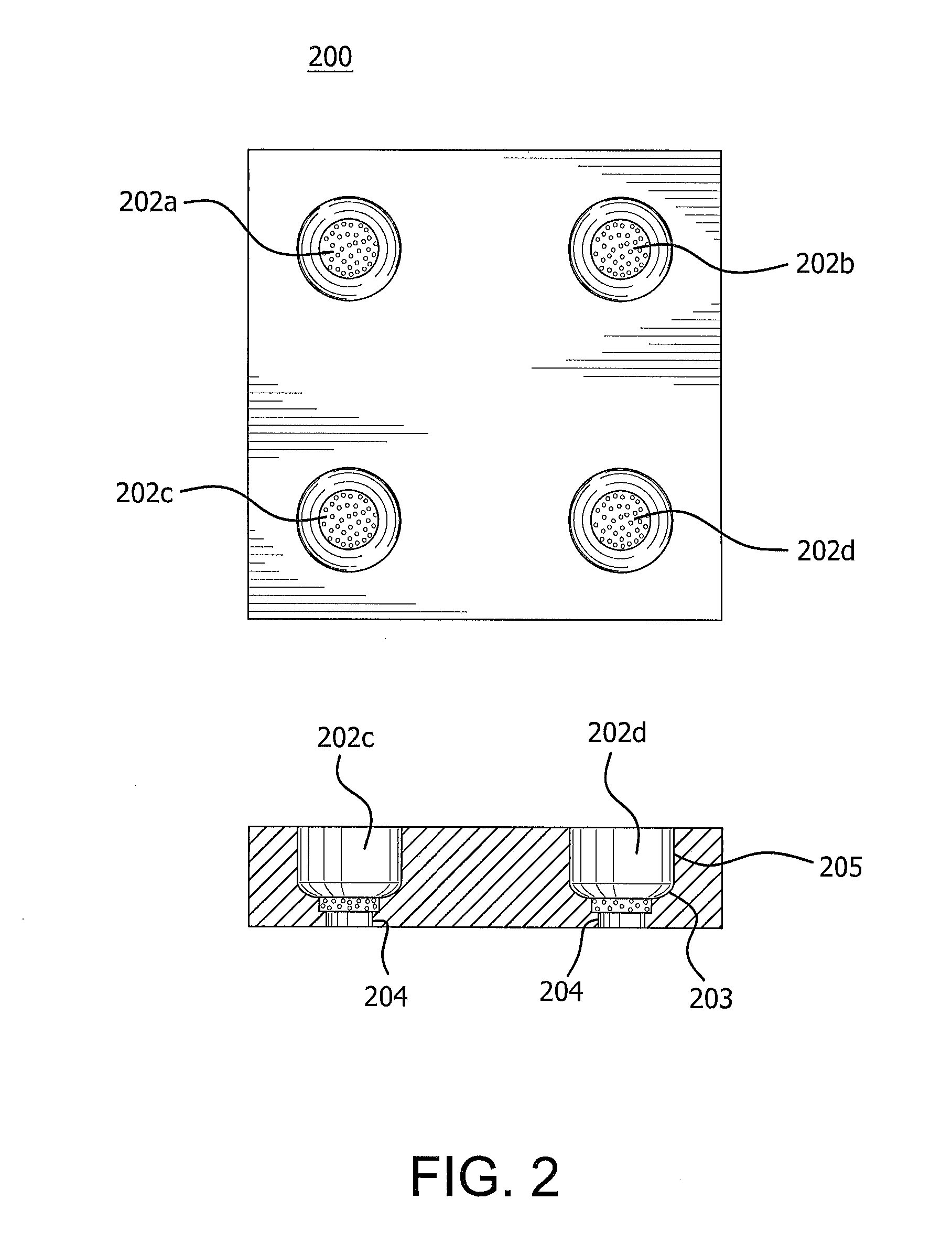Fluoropolymer Barrier Materials for Containers
a technology of fluoropolymer and barrier material, which is applied in the direction of rigid pipes, bottling operations, synthetic resin layered products, etc., can solve the problems of syringe construction, leachable and extractable contaminants in the elastomer of the stopper, and the apparent challenges of conventional syringe technology
- Summary
- Abstract
- Description
- Claims
- Application Information
AI Technical Summary
Problems solved by technology
Method used
Image
Examples
example 1a , 1b and 1c
Example 1A, 1B and 1C
[0079]Examples of certain embodiments of the invention were constructed using a single layer of densified ePTFE films as the barrier. The films were obtained by process described in U.S. Pat. No. 7,521,010 to Kennedy, et al. The films had thicknesses of 25 microns, 10 microns, and 5 microns, respectively. Eight commonly available disposable plastic syringe barrels and stoppers with shafts were obtained. Four were 1 ml plastic syringes and four were 3 ml plastic syringes. Each included an elastomer stopper comprising a butyl rubber. The syringes were thoroughly washed with 95% hexane to remove any silicone oil. The washed syringe barrels and stoppers were allowed to dry for 5 days on an airhood to ensure complete evaporation of the hexane. Syringe stoppers were made by taking a densified ePTFE film and applying it to the stopper. Samples were made using these different film thicknesses. The films were first heated by a heat gun (Karl Leister, CH 6056—Hotwind S) s...
example 2
[0082]A barrier was created from a single densified ePTFE film 1.7-1.8 mil thick, which was obtained by the process described in U.S. Pat. No. 7,521,010 to Kennedy, et al. The film (104) was placed in the thermoforming equipment as depicted in FIG. 1 using the mold depicted in FIG. 2. The thermoforming equipment (100) uses hot air to heat the mold (200), and the pressure drop through the apparatus supplies the force to form the material. The mold has round cavities (202a-d) having different dimensions. One of 0.380 inches, one of 0.372 inches, one of 0.365 inches, and one of 0.358 inches. The bottom portion of the cavities have a rounded corner (203) with a radius of 0.079 inches, a side straight wall 205 of 0.188 inch height, and contain a 0.201 inch wide, 2 micron porous stainless steel disc (204) at its bottom most point.
[0083]At room temperature a pressure of 5 psi was applied. The heater on the hot air system (102) (Osram Sylvania 6000 W, 240V, 25 A) was activated using a setpo...
example 3
[0092]A sample was prepared in a manner similar to Example 2 except that the densified ePTFE barrier was formed to shape using a faster pressure ramp rate. The procedure of Example 2 was followed except that a pressure ramp rate of approximately 3 psi / minute from 5 psi to 18 psi was chosen. This ramp rate was obtained by closing only the exit air valve (112). This molding procedure resulted in a barrier film with milky appearance, which may indicate that there was some porosity induced in the material by the speed of the forming process.
[0093]The mold cavity was then filled with elastomer, molded and attached to a syringe stopper according to the process described in Example 2. After insertion into a glass syringe barrel the sample was tested.
PUM
| Property | Measurement | Unit |
|---|---|---|
| thicknesses | aaaaa | aaaaa |
| thicknesses | aaaaa | aaaaa |
| thicknesses | aaaaa | aaaaa |
Abstract
Description
Claims
Application Information
 Login to View More
Login to View More - R&D
- Intellectual Property
- Life Sciences
- Materials
- Tech Scout
- Unparalleled Data Quality
- Higher Quality Content
- 60% Fewer Hallucinations
Browse by: Latest US Patents, China's latest patents, Technical Efficacy Thesaurus, Application Domain, Technology Topic, Popular Technical Reports.
© 2025 PatSnap. All rights reserved.Legal|Privacy policy|Modern Slavery Act Transparency Statement|Sitemap|About US| Contact US: help@patsnap.com



